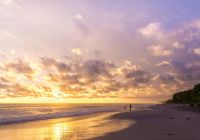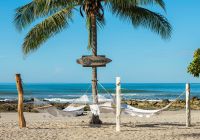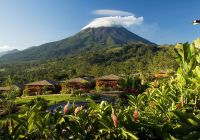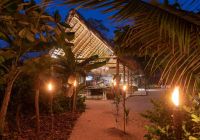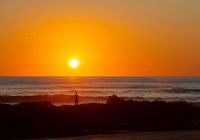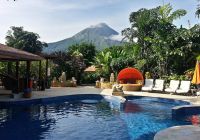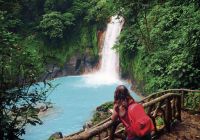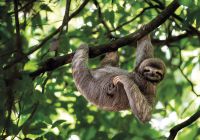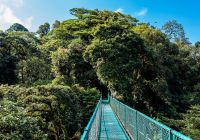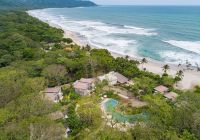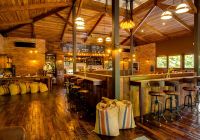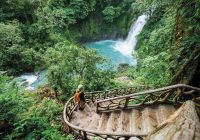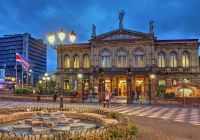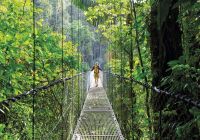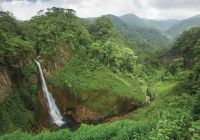Destination Costa Rica
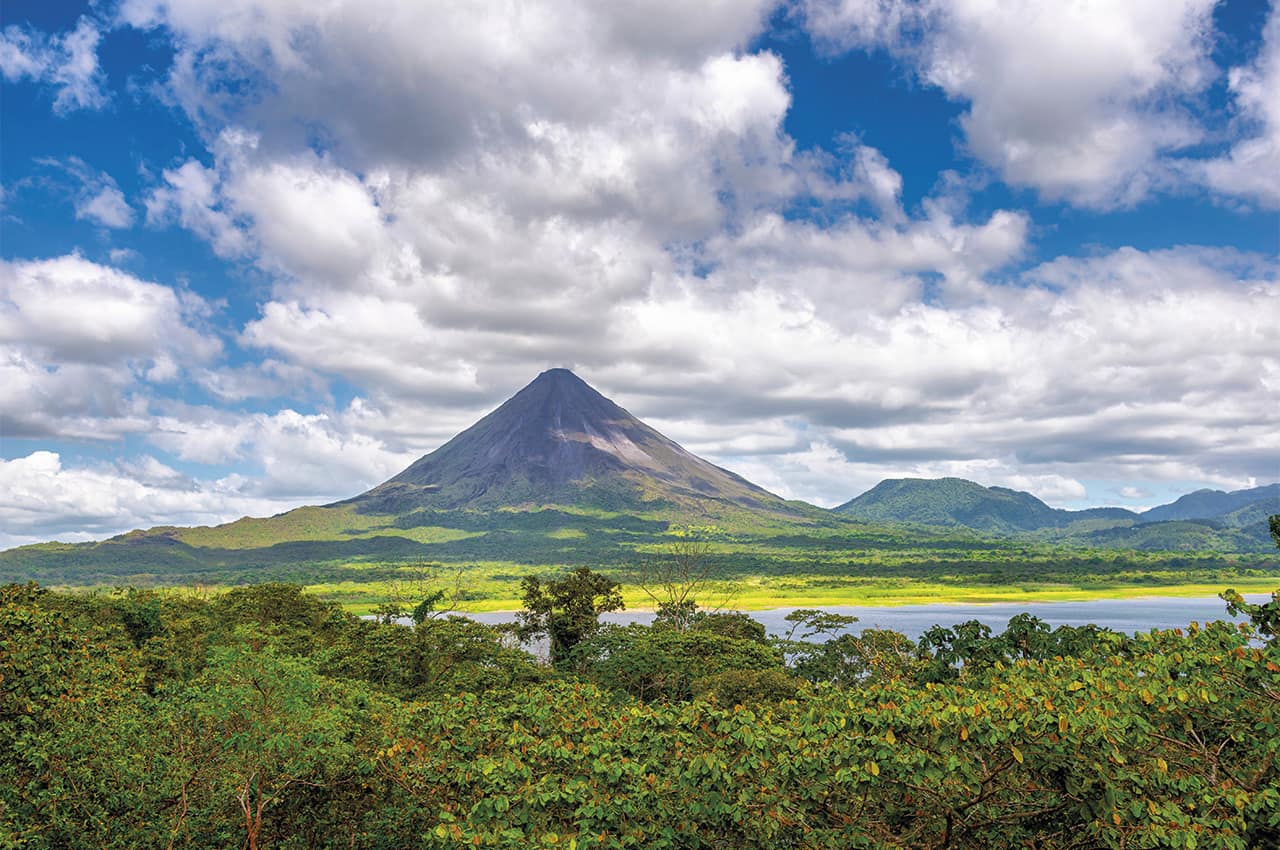
Costa Rica is a small Central American country with great tourist potential. Pura Vida!
Costa Rica
“Pure life” is an emotion, it's an attitude, it's happiness and it's a way of life.
Pura Vida: a term used all the time in Costa Rica and one of the first terms you notice when you arrive in the country. More than a saying, it's a lifestyle.
Costa Ricans (or Ticos) use this term to say hello, to say goodbye, to say that everything is fine. They have a very relaxed and simple way of looking at life. No worries, no stress, grateful for what they have.
Costa Rica is bordered to the north by Nicaragua and to the south by Panama and has the privilege of being the habitat of 5% of the world's biodiversity. More than 25% of its territory is protected under various forms of conservation. A tropical paradise, land of secluded beaches, stunning jungle and dormant volcanoes. A destination that has the perfect balance between adventure and relaxation. Costa Rica is “Pura Vida”!
General Information
Visto
Brazilians can legally stay in the country for up to 90 days without the need for a visa. In addition to the passport valid for a minimum of 6 months, an international yellow fever vaccination certificate issued by Anvisa is required. The vaccine must be taken at least 10 days before your trip.
How to arrive
Departing from Brazil, a flight to the country's main destinations takes about 9 hours, depending on the connection.
Internally, it is possible to take several domestic flights to speed up the trip.
Juan Santamaría Airport — SJO is the country's main airport, located in the capital San José.
- By Copa Airlines, with a connection to Panama City.
- By Avianca, with a connection in Bogotá.
Clima
Located in the tropical zone, Costa Rica's climate is modified by different local geographical, atmospheric, and oceanic factors.
The dry season, which runs from November to April, is the best time to visit the country. The incidence of rain in these months is lower, but it still has.
The rainy season lasts from May to October. The west coast, on the Pacific coast, rains far less than the Caribbean side.
Best time to visit
Costa Rica is a tropical destination.
- High season: December to April.
- Mid-season: May to July and November.
- Low season: August to October.
The best time to visit Costa Rica really depends on the objectives of the trip, each traveler's profile, and itinerary. The ideal is to talk to a consultant to prepare the itinerary according to the objective.
History
Costa Rican culture is a reflection of the mix of races that coexist in the country.
The main influence is European, which is demonstrated in aspects such as the official language - Spanish, church architecture and other historic buildings. The indigenous influence is less visible, but it is present in the tortillas that are part of typical Costa Rican food and in the ceramic crafts that are sold on the side of the roads.
The Ticos are proud to have more than a century of democratic tradition and more than 50 years without an army, which was abolished in 1948.
Culture
Costa Rica's wealth also lies in the cultural diversity of its people.
Throughout its history, the indigenous population joined the wave of immigrants who chose this country to be their land. People of European origin, mainly Spaniards, people of African and Asian descent, as well as people from different parts of the American continent, they interact with each other, enriching their cultural heritage through miscegenation.
Costa Ricans are famous for being hospitable people.
It is said that Ticos are this nation's best asset, and once you have experienced their kindness and spontaneity, there will be no doubt about it.
Where to visit
Almost unlimited tourist possibilities, including extensive rainforests, volcanoes, rivers flowing through the mountains, beaches and many natural resources protected by an important national park organization and forest reserves.
Central Valley
It's the heart of Costa Rica, home to San José - the capital and main gateway to the country.
San José offers the possibility to enjoy a variety of cultural and natural tourist attractions, including the architectural jewel of Costa Ricans: the National Theater.
The National Parks that are located in the Valley protect the main volcanoes in the area: Poás, Bráulio Carrillo, Irazú and Turrialba, all have a road infrastructure to visit them and enjoy their birds, landscapes, craters and natural forests.
The rural villages are of great scenic beauty and offer the Costa Rican lifestyle of yesteryear, with their wooden houses, with the presence of large coffee farms, mills and dairies.
Highlights:
- San José
- St. Mary's Valley of Dota and Copey
- Orosi Valley
- City of Cartago and the Basilica of Los Ángeles
- Saint Gerard of Dota
- City of Turrialba
- Boa Vista Hill
- Puriscal City
- Irazú Volcano
Central Pacific
This region of the country extends from the city of Puntarenas to the mouth of the Barú River, in the sector known as Dominical de Osa. It is a region with humid and rainy climatic characteristics, and as a result, the beaches and hills surrounding the coast have greater biodiversity.
Highlights:
- Manuel Antonio National Park and its beaches
- Tárcoles River
- Jacob's City
- Esterillos Beach
- Carara National Park
- Savegre River
- Herradura Beach
- Estero Palo Seco and Esteiro Damas
- Barú Beach
Puntarenas
The tourist province of Puntarenas and the Gulf Islands have an area of 2442 km2 and 425 kilometers of coastline. It comprises part of the Nicoya Peninsula and the city of Puntarenas.
It is one of the most important tourist regions in Costa Rica. Its coasts are embellished by abundant islands, coves, beaches and natural treasures of great beauty, which make it a tourist destination par excellence.
This spectacular area is very close to the Central Valley, specifically 120 kilometers from the capital.
Highlights:
- Monteverde Cloud Forest
- Montezuma Beach and waterfall
- Cabuya Beach and Cabo Blanco Absolute Nature Reserve
- Gulf of Nicoya Islands
- Puntarenas City
- Curú National Wildlife Refuge
- Baleìa Bay and Tambor Beach
- Puntarenas and Mata de Limon Estuaries
- Nicoya Peninsula (between Guanacaste and Puntarenas)
Guanacaste
The Guanacaste region encompasses the Pacific coast of Costa Rica from the border with Nicaragua to the mouth of the Bongo River on the Nicoya Peninsula. This province comprises an important portion of Costa Rica's natural and cultural heritage.
Along the coastline there are numerous beaches that are bathed in the warm waters of the Pacific Ocean. The coastal landscape is exceptional. There are extensive white sandy beaches and a tranquil sea colored by intense blue colors.
Highlights:
- Tamarindo Beach
- Rincon da Velha National Park
- Samara Beach
- Nosara Beach and Guiones Beach
- Hornillas and Miravalles Volcano
- Santa Rosa National Park
- Barra Honda Caves
- Plains of Cortez Falls
- Del Coco beaches
Northern Plains
It's the translation of peace and paradise for nature lovers.
The northern plains have several protected areas, lakes, lagoons, volcanoes, rivers, and because it is a highly rainy region, it has humid forests, evergreen and fertile plains, natural environments that are sanctuaries for water birds, reptiles and mammals.
Highlights:
- La Fortuna
- Arenal Volcano National Park
- Arenal Lagoon
- La Fortuna Hot Springs
- Chato Hill
- Maleku Indigenous Reserve
- Tenorio National Park and Rio Celeste
- Bajos del Toro Amarillo
- Old Port of Sarapiqui and Sarapiqui River
- Cote or Coter Lagoon
South Pacific
Indigenous land, home to the Cordillera de Talamanca, with immense plains and plantations.
From the icy heights of Cerro Chirripé to the humid coastal jungles of the Osa Peninsula, this region encompasses some of the most remote and wildest land in the country. Vast tracts of forest remain untouched in La Amistad International Park, and the country's most visible indigenous groups - the Bribrí, Cabécar, Boruc, and Ngöbe - maintain traditional ways of life in their territories.
The rugged shores of Golfo Dulce and the Osa Peninsula captivate travelers with deserted beaches, world-class surfing, and opportunities for rugged exploration.
Two protected areas of great importance are located in this area: the Corcovado National Park, which the National Geographic Magazine defined as the most biologically rich place on the planet, and the Biosphere Reserve, which was also declared a World Heritage Site and is part of the International Friendship Park.
Highlights:
- Corcovado National Park
- Drake Bay
- Saint Gerard of Dota
- Pavones
- Puerto Jimenez
- Osa Peninsula
Caribbean Coast
The Caribbean coast is the fusion of wild nature with white sandy beaches.
The unique atmosphere of the Caribbean coast represents a completely different culture.
The Caribbean coast extends from the San Juan River to the Sixaola River, on the border with Panama.
Highlights:
- Tortuguero Canals - Tortuguero National Park
- Old Port of Talamanca
- Cahuita National Park
- Lazy Shrine
- Cordillera de Talamanca
- Gandoca Manzanillo Wildlife Refuge
- Chocolate Tours
- City of Limon and the island of Uvita


